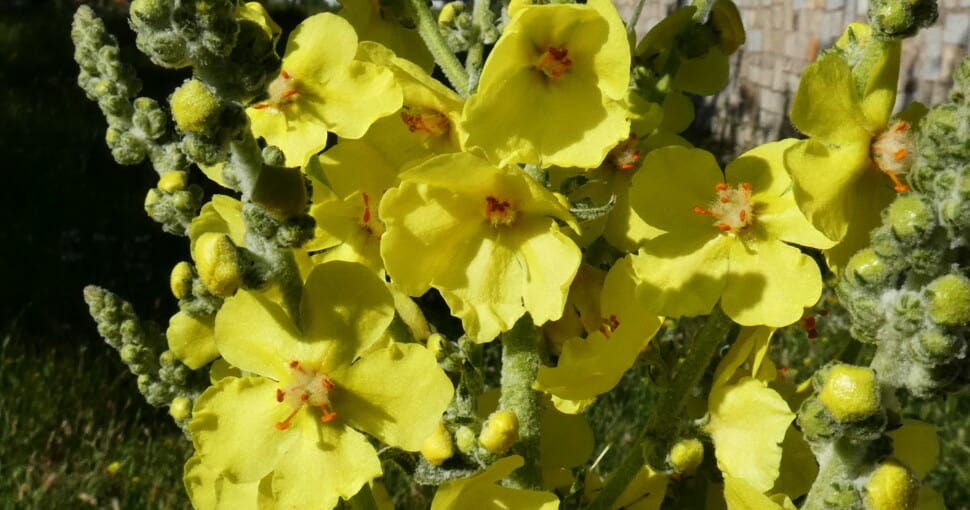Common mullein or Verbascum thapsus is only one or more than four hundred and fifty species in the Verbascum genus and originated in Europe and North Africa. Mullein has spread throughout the rest of the world, following explorers as they reached new continents because of its usefulness to man. Historically mullein has been used medicinally, as bandages, or even as bathroom flannel.
Contents
Mullein is a biennial plant, meaning it needs two years to complete its growth cycle. Large hairy leaves that grow in a rosette pattern form during the first year of growth. Soil quality, temperature, and rainfall all affect the size of the leaves, which could range from four to twelve inches in length, and the width can range between one and five inches.
In the second year, common mullein produces a long flower stalk and a profusion of golden-yellow flowers. Individual mullein flowers all have five petals arranged around four to five stamens. The most common mullein flower color is yellow, but there are also white, pink, red, or even blue varieties.
At this point, it is hard to mistake mullein for any other plant, but in the first year of growth, a few plants’ leaves could look like mullein.
1. Lamb’s Ear
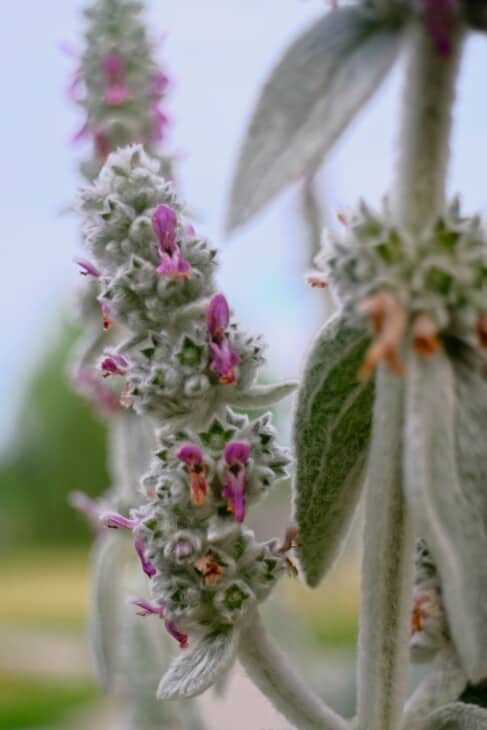
Lambs ear (Stachys byzantine) belongs to the Labiatae or mint family. The origins of lamb’s ear can be traced to Turkey and Asia, but this plant has also become naturalized in Europe and North America. Unlike mullein, lamb’s ear is a perennial plant that does not grow well in hot, humid conditions.
Related: 8 Plants That Look Like Lamb’s ear
The main similarity between mullein and lamb’s ear is the wooly covering on their leaves. Lamb’s ear leaves are even more wooly than mullein, and the covering is silver-grey. The soft and fuzzy leaves were also used as bandages and to reduce bleeding during the Civil war. Science has confirmed that lambs ear helps with blood coagulation and has antiseptic and antibacterial properties.
Lamb’s ear leaves grow uniformly with a spreading pattern that is ideal as a ground cover. Lambs’ ear leaves are about six inches long and up to two and a half inches wide. At eighteen inches, the flower-bearing stems of lamb’s ear do not grow as tall as mullein and bear pink or purple-colored flowers early in summer.
2. The Burdock Plant
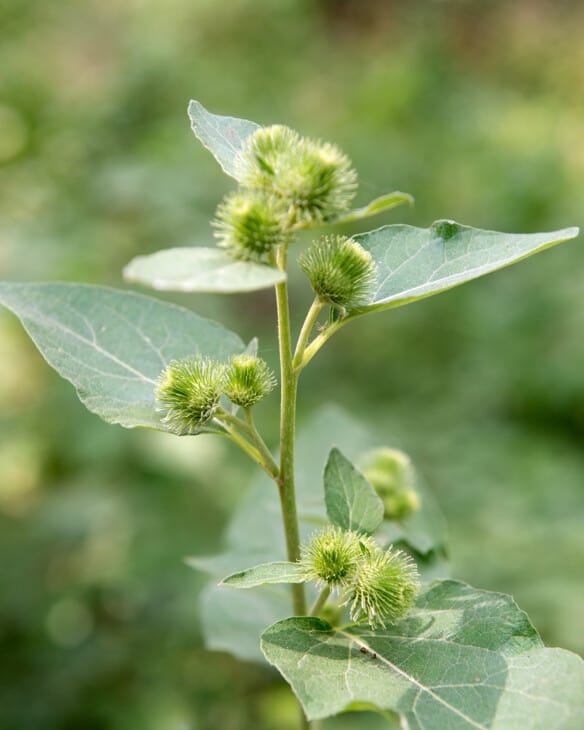
The common burdock (Arctium minus) is a biennial plant that is native to Northern Asia and Europe. Thanks to its seed burrs that lend to the name, seeds of the burdock have hitched their way into many other continents. The pesky burdock seed is credited as the inspiration for the Velcro fastening mechanism.
The large leaves of the burdock are arranged in rosettes in their first year in the same fashion as mullein. The underside of burdock leaves is covered in soft hairs, but the upper surface is almost smooth. The edge of the burdock leaf is wavy, and the veins of the leaf are also less pronounced compared to that of the mullein leaf.
The purple thistle-like flowers have many small hooks or burs and are borne on the ends of many branches of the plant, not on a single flower stalk.
Burdock is a versatile holistic medicine and a choice edible plant in some countries but can be described as a weed because of its negative impact on agriculture, so be careful when propagating this plant.
Related: 6 Plants That Look Like Burdock
3. Comfrey And Russian Comfrey
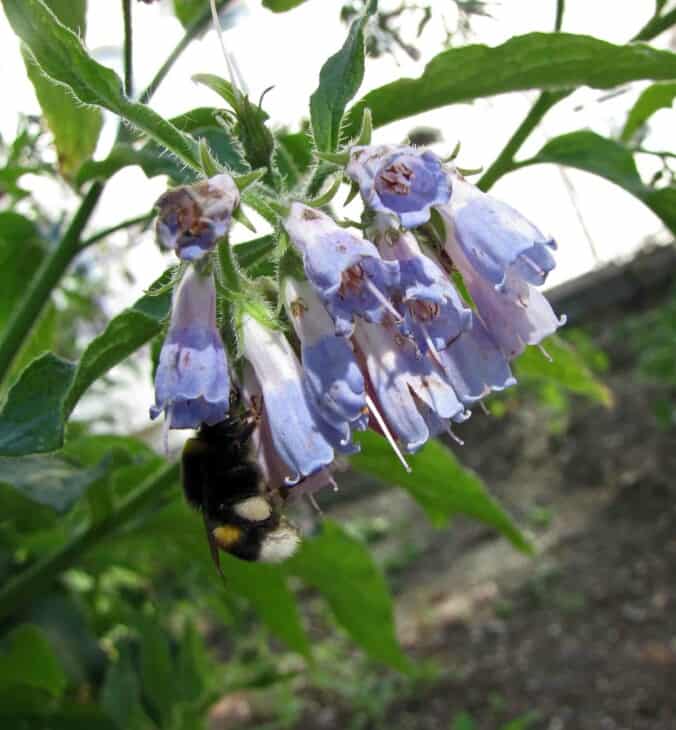
Comfrey (Symphytum uplandicum) is another perennial plant that can look like mullein. The vein pattern on the leaves and the leaf size are very similar in these two plants. Leaves at the base of the plant are about eight inches long, but leaves higher up on the plant are smaller.
Comfrey belongs to the Boraginaceae family of plants that originated in Britain and landed on US soil along with English emigrants and can now be found throughout Asia, Europe, and even Siberia. Comfrey has also spread across the globe due to its healing powers and has been used to heal broken bones and speed wound healing for almost two thousand years.
The comfrey leaf shape is very similar to mullein, but the new leaves of the mullein plant are significantly hairier than those of comfrey. The edge of the comfrey plant is smooth compared to the slightly scalloped pattern of the mullein plant.
The flower stems of the comfrey plant are delicate compared to mullein, and the flowers are petite and bell-shaped. Comfrey flowers range in color from pink to deep purple or blue.
4. Foxglove Plant
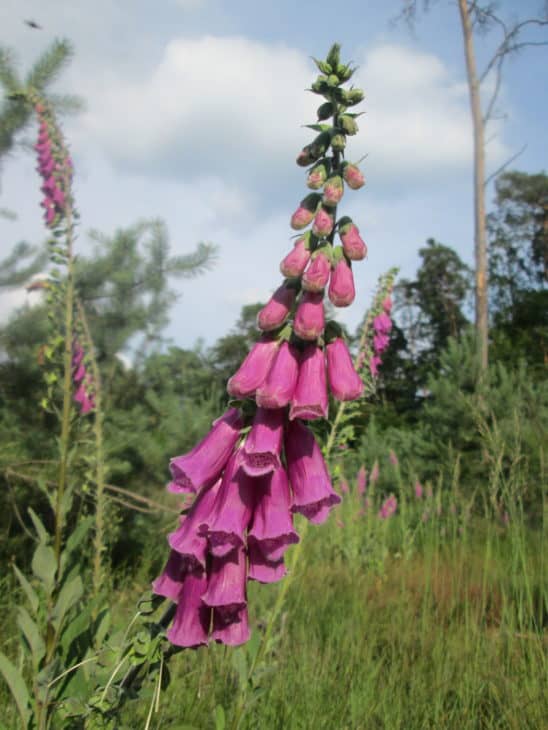
Foxglove (Digitalis purpurea) is one of around 20 foxglove plants and originates in Europe and the Mediterranean regions. Like mullein, foxglove is a biennial plant. The leaf rosettes of the foxglove in the first growth year can resemble a mullein plant of the same age.
The leaves of a young foxglove plant are soft and hairy, but the new leaves are less hairy than mullein. Both plants have lobed or scalloped leaf edges. As foxglove can be toxic if ingested, it is best to verify the type species before using it internally.
Once the foxglove plant starts to bloom, there is no chance of confusion as the flowers of the foxglove resemble pink bells and look nothing like the five-petaled mullein flowers.
5. Broadleaf Plantain
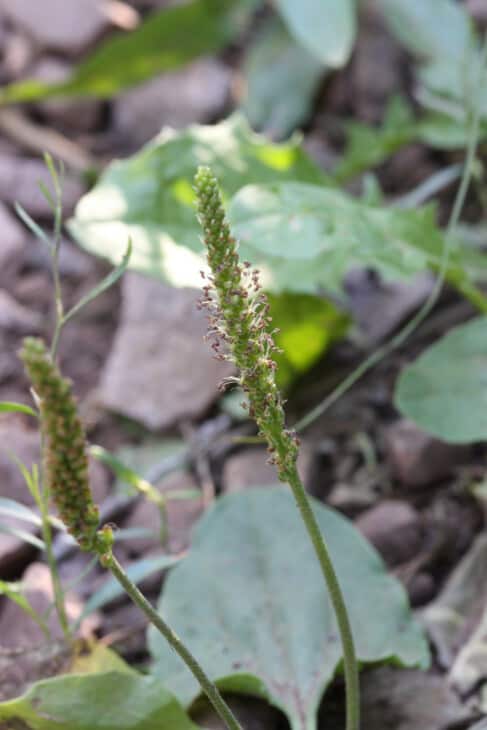
Broadleaf plantain (Plantago Major) was named white-man’s footprint by Native Americans because its distribution closely followed the arrival of Europeans in their country. Like mullein, the many medicinal properties and uses of plantain were the reason it was widely distributed. Today plantain plants can be found on roadsides of almost every country.
The leaves that grow in a rosette formation of this perennial herb can range in size from two to eight inches in length and can be up to four inches wide. The plantain leaf has prominent veins that run parallel from the base to the tip of the leaf. The upper side of the leaf is much smoother than mullein, but the veins on the underside are covered with fine hairs.
The flower stalk of plantain develops in the first year of growth and is leafless compared to mullein, which only flowers in the second year of growth and is much sturdier and has leaves on the lower end of the flower stalk. The flowers of the plantain plant are inconspicuous, measuring less than the size of a match head.
6. Curly Dock or Yellow Dock
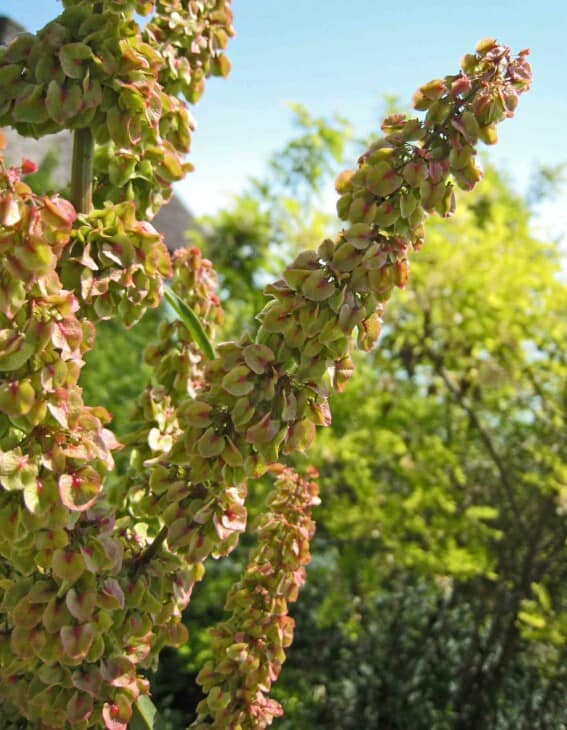
Curly dock (Rumex crispus) also goes by the name of yellow dock, which references the color of the root. Curley or crispus references the wavy outer edge of the leaf. The leaves of this biennial plant all grow from a central point and form a rosette of leaves similar to mullein in the first year of growth.
The vein partnering on the yellow dock leaf is very similar to that of mullein.
The leaves can vary in size depending on the soil and growing conditions, ranging from six to fourteen inches in length and up to four inches wide. The wavy or curly feature of the leaf becomes more pronounced in the second year when the plant produces its flower stalk.
Like mullein, the center vein of the curly dock leaf is very pronounced, and the leaf edge is scalloped in both of these plants, but the dock is not as hairy or wooly as mullein. Yellow dock is classified as a weed in many countries but is an excellent wild edible plant. Ensure that you have a definitive identification before harvesting this plant to eat, as it could be confused with the toxic foxglove leaf.

